Only one woman's name is amongst the many men's names on local war memorial
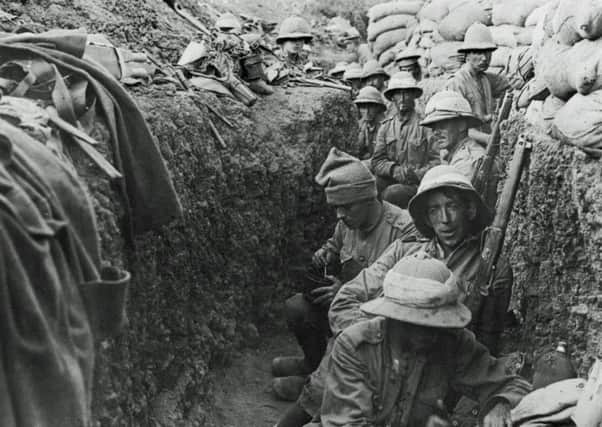

While many of the stories are interwoven with tears, tragedy and often with previously unrecounted heroism, there are some unusual tales of sheer determination and remarkable achievement in a very different era a hundred years ago.
The introductory note that accompanied today’s account stated: “There is only woman named on the Queen’s University War Memorial.”
Advertisement
Hide AdAdvertisement
Hide AdShe is Isobel Addey Tate, a medical doctor who was “a trail blazer, not only gaining entry to a profession which heretofore has been solidly male,” the note continued “but also in going to serve in war prior to women being permitted to hold military rank in the Royal Army Medical Corps.”
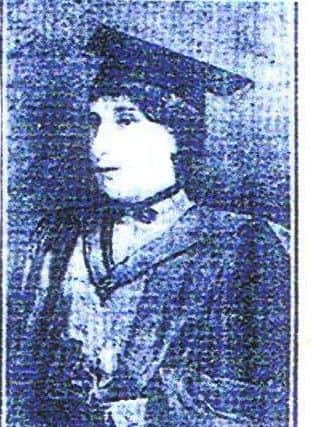

Isobel was born in Tartaraghan, near Loughgall in Co Armagh, in May 1874.
She was the daughter of John Tate, a Portadown merchant, and Isabella Cherry.
The first woman to officially become a doctor in the British Isles was Elizabeth Garrett Anderson who qualified in 1866, despite enormous difficulties with the totally-male medical bureaucracy.
Advertisement
Hide AdAdvertisement
Hide AdIn 1888 the then Queen’s College, Belfast, admitted its first female medical student, where Isobel matriculated a few years later in 1893/4.
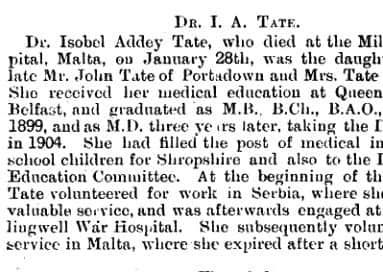

She graduated in 1899, when she also registered with the General Medical Council at Ireland.
The QUB War Memorial, commemorating the staff, students and graduates who died in the two World Wars, was first dedicated in July 1924.
Isobel’s name is embossed in bronze along with the short biography – “Doctor, Friend’s War Victims’ Relief Committee, on Staff of Military Hospital Malta.”
Advertisement
Hide AdAdvertisement
Hide AdShe is also commemorated on St Andrew’s War Memorial in Burnley, Lancashire, where she is again the only woman named, and on the Women’s War Memorial in York Minster, one of a very few “medical women” commemorated on a series of wooden screens.
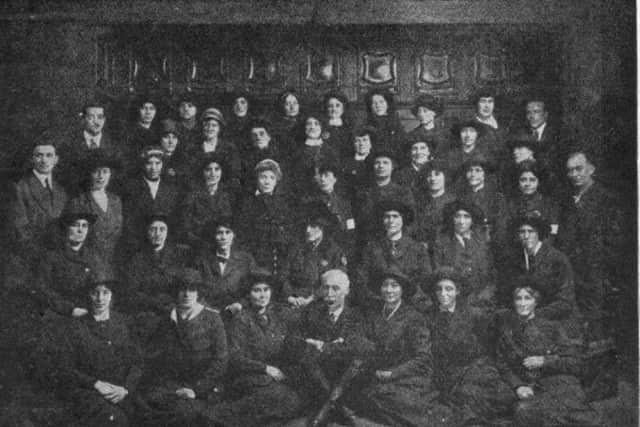

Isobel’s father John was a Portadown merchant, where her grandfather Dawson Tate had owned a weaving factory.
Along with his links to the textile trade, at the time of his death in 1892 her father owned a local boot factory.
According to the 1911 Irish Census Isobel’s widowed mother had 10 children with eight surviving, and the family was noted as being Methodist – although Isobel appears to have later attended the Church of England.
Advertisement
Hide AdAdvertisement
Hide AdA biography of Isobel muses “it would be fascinating to know what motivated a girl from her background to train to be a doctor, certainly not a common choice in women of her generation”.
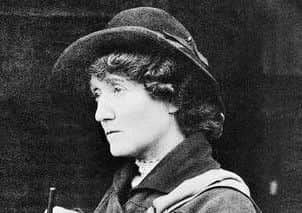

After graduation she worked initially in Dublin and continued her studies, qualifying as a Doctor of Medicine from the Royal University of Ireland in 1902.
She moved to Beverley in Yorkshire, working as an assistant to a surgeon, and in 1904 was awarded the Diploma of Public Health from the Victoria University, Manchester, and was appointed Resident Medical officer at Burnley Union Infirmary.
The outbreak of The Great War created new opportunities for women and gave Isobel an opportunity for an adventurous range of career experiences.
Advertisement
Hide AdAdvertisement
Hide AdIn 1915 she joined The Serbian Relief Fund, in a unit set up by Mabel Anne St Clair Stobart, known as the Third Serbian Relief Unit.
The Serbian Relief Fund was one of number of humanitarian initiatives trying to alleviate the serious medical problems in that part of the Balkans.
Queen Mary was a patron of the Fund whose board members included some very prominent people like Lloyd George, Winston Churchill and Cardinal Bourne, the Catholic Archbishop of Westminster.
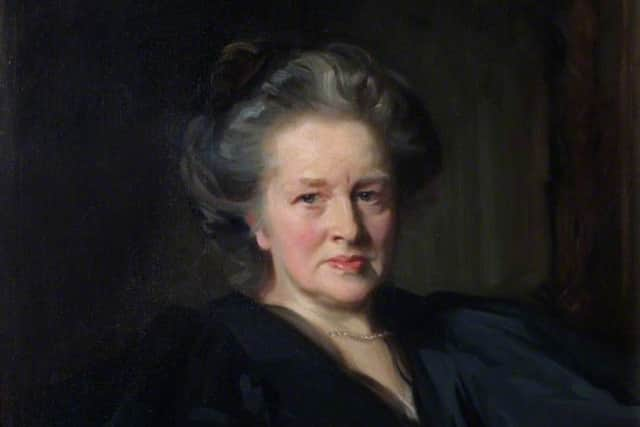

Isobel contracted typhoid fever soon after she arrived in Serbia, and was sent to Belgrade Hospital, but she returned home just before the retreat from Serbia.
Advertisement
Hide AdAdvertisement
Hide AdAt the height of war in early 1916, Louisa Aldrich-Blake, Surgeon at the Elizabeth Garrett Anderson Hospital and Dean of the London School of Medicine for Women, approached all the women on the Medical Register asking them to work with wounded troops on the various fronts.
The woman doctors were not treated as equals since they were not awarded rank, grading, uniforms, or even the ration and billeting allowance that all male doctors received.
Isobel volunteered for service with Royal Army Medical Corps and embarked for Malta on August 24 1916.
She initially took up duties at St Paul’s Military Hospital and subsequently the Military Hospital in Valletta, Malta’s main city.
Advertisement
Hide AdAdvertisement
Hide AdMany of the casualties from Gallipoli and Salonika were shipped from the mainland and treated in the military hospitals in Malta, although this was reduced when German submarines started attacking the hospital ships.
In early 1917 Isobel took charge of the Bacteriological Unit in the Valletta Military Hospital.
This was to be her last medical posting – on January 28 1917 she died of “congestion of the brain” (due to typhoid fever) at Victoria Junction, Sliema, Malta.
In all, 82 lady doctors served in war hospitals in Malta during the First World War.
Advertisement
Hide AdAdvertisement
Hide AdAt the time of Isobel’s death her mother Isabella Tate was resident at Ruskerry, Donegal Park Avenue, Belfast.
Isobel Addey Tate lived and died before women had the vote. The remembrance ni website, where much of Isobel’s remarkable story is told, ends with a moving valedictory – “the path she chose was not a simple or easy one but women like her did much to alter the way women were to live and work in the 20th century.”